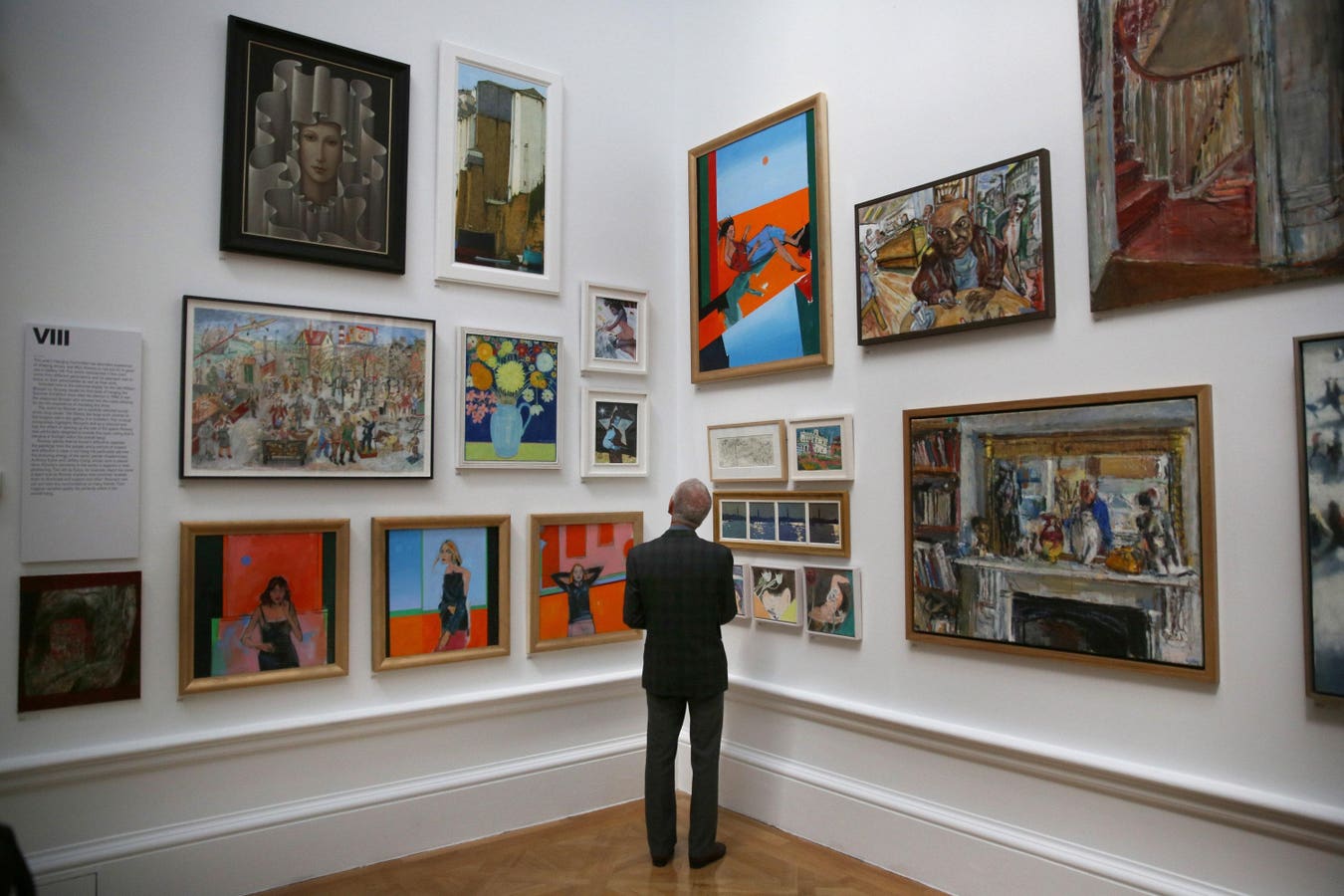
Investing in alternative assets is no longer just for large institutions or the ultra-wealthy. Over the past decade, access to non-traditional assets like private equity, hedge funds, and private credit has opened up for everyday investors. The collectibles market—a niche within the broader world of alternative investments, including luxury watches, art, handbags, vintage cars, and fine wine—has followed this trend, inviting a new wave of interest and participation.
Although collectibles investing has been around for decades, the COVID-19 pandemic gave the estimated $450 billion market an unexpected boost. Lockdowns led people to explore their passions, and new online platforms emerged, allowing enthusiasts to buy whole or fractional shares of luxury items. This surge in demand drove up prices and sparked activity in most collectible categories.
But in mid-2022, rising interest rates changed the landscape. As short-term rates jumped from 0% to over 5%, investors found appealing returns elsewhere, and demand for high-end collectibles began to cool. Some categories have since lost 30-40% of their peak value, while others have managed to maintain gains. Here’s a closer look at how some of the most popular collectible markets are performing today.
Luxury Watches
The luxury watch market has experienced substantial growth over the past five years. According to Grandview Research, the global luxury watch market is valued at approximately $42 billion. The market has been driven by factors such as the growing inclination to use luxury watches as status symbols and the prevalence of social media and short-form videos that allow celebrities to showcase their latest accessory.
Rolex, probably the most recognizable luxury watch brand, has seen significant price increases over the past five years. The WatchCharts Rolex index, composed of the top 30 models within the brand, increased nearly 70% between March 2020 and March 2022. The average price has since fallen 30% from $30,300 to $21.300. While the average Rolex watch still commands a 20% premium to the retail value, some industry followers believe secondary market prices have more room to fall.
One of the key drivers of luxury watch values, and for any collectible, is the rarity or uniqueness of a particular piece. Rolex typically raises retail prices by approximately 6% every year and reportedly produces just over one million watches a year — a number that hardly exudes scarcity. By comparison, some famous independent watchmakers, such as F.P. Journe, produce around 1000 mechanical watches annually. As such, prices for some of these independent watchmakers have held up better than the larger, more-hyped brands.
In fact, the vast majority of luxury watches should not be considered investments or collectibles, mainly due to their lack of overall scarcity. There are more than 600 Swiss watch brands, with only a few that have secondary values higher than the retail price because, in most cases, production can quickly ramp up to meet excess demand.
Dominic Khoo, the founder of WatchFund, has invested in the luxury watch market for over two decades. He makes a clear distinction between investors and collectors. “99.9% of watches will not sell for higher than the price you buy them for. Your greatest chance of making money in the watch market is to either buy watches that other people can’t buy, such as piece uniques or prototypes, or buy at prices that other people can’t get,” Khoo said in an interview.
There is no shortage of resources for people looking to collect watches; online dealers such as Chrono24, the 1916 Company, and Bob’s Watches have huge inventories of available pre-owned watches and also provide market commentary and education; websites like WatchCharts.com and Everywatch.com allow investors and collectors to track prices of various models over time; and there are hundreds of YouTube channels to follow to stay on top of the latest trends.
Chart of the WatchCharts Overall Market Index
Art
Fine art has long been a market adored by collectors. Paintings from artists such as Banksy, Claude Monet, and Andy Warhol not only provide their owners with intangible benefits but have also been profitable investments historically. Depending on the index used in the calculation, art has delivered long-term returns between 7.5% and 11.5%, with lower volatility than the stock market and low correlation to other asset classes.
Still, art prices are dictated by supply and demand, and like other collectible markets, they have softened in the last two years. According to a Bank of America report published earlier this year, global auction sales across all fine art categories decreased 27% in 2023 from the prior year, and the average price of artwork sold at auction decreased by 32%. 2023 marked the largest single-year decline in average sale prices in over seven years.
Data from Art Market Research, a firm that designs indices to track the value of contemporary art and other luxury collectibles, also highlights a general weakness in the market. AMR’s All Art Index climbed more than 53% between November 2021 and September 2023 but has since declined 15%.
There are several ways for investors to access the art market without the need to commit millions of dollars. While the art market is confusing, fragmented, and inefficient, a growing number of firms help investors manage the process. Companies like Masterworks offer fractional shares in multi-million dollar, blue-chip artwork purchased at auctions, and firms like Yieldstreet offer pooled investment vehicles that own diversified art portfolios.
Five-year chart of the AMR All Art and Handbags indices
Handbags
Hermès’ Birkin and Kelly bags are the gold standard when it comes to handbags. Prices in the secondary market regularly trade three times higher than retail, also making them an attractive investment. Serious handbag investors will more than likely own these two designs in their collection. “I love Birkin and Kelly bags because of their workmanship and quality. They are iconic and will never go out of style,” says avid collector Caroline Linden.
Limited supply and worldwide brand recognition make Birkin and Kelly bags extremely desirable. Unlike other luxury, high-end brands, a person cannot simply walk into a Hermes boutique and purchase a Birkin. Affordability is not the issue. These items are not sold to customers — they are allocated. The allocations depend on factors such as total spend, ambassadorship of the brand, and one’s relationship with a particular salesperson and boutique.
Due to limited supply and high demand, certain handbags have not seen much of a price dip in the secondary market. China, the second largest market for luxury goods in the world, has begun to pull back on handbag purchases. Despite this slowdown, the secondary market for handbags remains strong although not as robust as two years ago. Discussions with collectors noted a slowdown in buying and selling activity in the secondary market but not a material change in values.
AMR’s Handbag index has climbed 42% over the past five years. After a steep climb in 2023, values have held steady, much to the dismay of collectors who were waiting for a price correction. Since shelling out $25,000-$30,000 for a bag in the secondary market is well beyond the price range of most consumers, investors genuinely interested in owning a handbag can do so by purchasing fractional shares. Investors can’t take the bag out, but they can still benefit from an increase in its value. Platforms such as The RealReal and Rally offer whole and or fractional shares of ultra-luxury and rare handbags.
Vintage Cars
Over the last two decades, the vintage car market has seen steady growth and increasing interest from collectors and investors. While specific market size data is limited, the sector has been driven by increased disposable income, growing interest in automotive heritage, and the perception of vintage cars as alternative investments.
More recently, the market has witnessed a surge in online platforms and auctions dedicated to buying and selling vintage cars. Emerging economies like China and India have shown rising demand for vintage cars, contributing to market expansion.
Several data providers help investors track the performance of the vintage car market. For example, Historic Automobile Group International is an independent investment research house with specialized expertise in the rare classic motorcar sector. HAGI has created a variety of benchmarks representing data collected by private contacts, marque specialists, dealers, and auction results.
According to HAGI founder Dietrich Hatlapa, the HAGI Top Index, an overall market measure for exceptional historic automobiles, rose 25.1% in 2022, fell 6.2% in 2023, and has declined 3.6% so far in 2024.
Similar to other collectibles, investors looking to get involved in the vintage car market do not necessarily need to navigate the intricacies of the auction market. They can buy partial shares in a classic car. For example, car-focused fractional providers like Acquicent offer minority interests in vintage vehicles. Multi-category fractional firms such as Rally also provide access to vintage car investments on their platform. Both firms deal with post-purchase issues like appropriate storage, insurance, and ongoing maintenance.
Chart of the HAGI Top Index
Fine Wine
The fine wine market has shown resilience as an alternative investment, delivering an average long-term annual compound return of approximately 10% with a low correlation to stocks. Like other collectible markets, fine wine benefits from scarcity and brand equity. Well-established producers have a cult-like following and produce limited quantities every year. Another interesting aspect of wine investing is the value accrual due to aging. Most wines, especially fine wines from top producers, get more valuable as they age, with the optimal hold period being in the 5-7 year range.
Despite its long-term appreciation potential, the wine market is still subject to swings in consumer demand and price volatility. Lately, the market has been under pressure. According to Tom Burchfield, Head of Market Intelligence at Liv-ex, a leading global exchange for the fine wine trade, the market has been on a gradual downturn since October 2022. Before then, the fine wine market had experienced a pretty good run, particularly during COVID-19 when low interest rates and changes in drinking habits pushed up prices.
“While we have seen various pockets of relative stability (e.g. mature blue chip Bordeaux), the fine wine market is still afflicted by a couple of key issues – namely a stock overhang and the near total disappearance of the Chinese market,” says Burchfield, regarding the current state of the market. “Prices might be getting to a point where buyers are seeing opportunities. However, it doesn’t appear that we are at the bottom just yet, and it may well be that there is a lot of stock on the market to get through at lower prices before a turnaround,” he added.
The Liv-ex Fine Wine 50 Index, which tracks the daily price movements of the Bordeaux First Growths from the ten most recent vintages of Lafite Rothschild, Margaux, Mouton Rothschild, and Haut-Brion, has declined approximately 23% from the October 2022 peak.
Investors can take advantage of the price dip in several ways. Online platforms like Vinovest and Cult Wine Investment allow individuals to put together a portfolio of diversified wines across different regions. For larger and more sophisticated investors, wine can be purchased directly at auction sites like Brentwood Wine Company or Winebid.
Live-ex Fine Wine 50 Index
Overall State Of The Collectibles Market
The collectibles market has demonstrated strong growth and resilience across various categories over the past two decades. While recent economic challenges have led to some market corrections, the long-term outlook remains positive, driven by factors such as increasing wealth, growing interest from emerging markets, and collectibles as a type of alternative investment.
In addition, thanks to the growth of fractionalization, younger or less affluent investors can participate. Konvi, a European platform offering fractionalized investments in 10 different collectible asset classes, is seeing growth mainly from Millennials and Gen Z investors. “This group has stocks and bonds and is looking for diversification tools, and they are not necessarily investing out of passion,” says Eran Peer, co-founder of Konvi.
The ease of access, added diversification and enjoyment of investing in collectibles should continue to attract new enthusiasts. New investors, though, should be aware that the advertised long-term returns are by no means guaranteed. Investors need to educate themselves on the intricacies of each market and would likely benefit from using a professional third party or platform to put together a portfolio. Rampant fraud, lack of transparency, huge markups, limited liquidity, and storage and insurance needs are just a few of the risks of collectibles investing. Still, the added investment diversification of tangible assets offered in collectibles makes the market hard to ignore.









